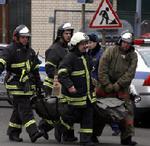Terror in Moscow: The Wound that Cannot Heal

Terror events have an inevitable domino effect when it comes to engendering fear. Security establishments wonder what went wrong. Gaps, actual or mythical, are identified. Levels of fear or security are increased or adjusted like measures on a heating implement. (Today, ladies and gentlemen, the security alert level is yellow or medium.) Resources are added to the books and to hungry security agencies. So now, we have the issue with the Moscow subway attacks on March 29 which killed 38 people while wounding 72 others.
The most devastating of the two attacks came at the Lubyanka station, where 23 people were slain. The other struck the Kultury metro station some 40 minutes after the first blast. Both targets had their predictable, symbolic significance, suggesting that most terrorists have at least some knowledge of semiotics. The first target was near the heart of Russia’s security service, the Federal Security Service (FSB), while the second is located near the centre of state sponsored journalism.
The perpetrators are still being identified, though the remains of two women have been found, suggesting another use of ‘black widows’ or female suicide bombers. FSB chief Alexander Bortnikov and his Kremlin bosses are fingering the volatile region of the North Caucasus. While officials in Moscow have been smug at their efforts at subjugating the Chechen region after years of war, they have taken their eye of other simmering conflicts in the region. The neighbouring republics of Dagestan and Ingushetia are not particularly keen on links with Moscow, and Islamic separatism, allied with clan rivalries, is rife. Separatists have vowed attacks on targets in Russia.
The talk in the parliament’s lower house, the State Duma has been tough and coarse. Viktor Ilyukhin, deputy chair of the security committee in that body, claimed that the attacks were made in ‘revenge for the actions of the security forces against them, for the arrests and liquidations of their leaders’ (McClatchy, Mar 29).
The global reaction by transit authorities was immediate. As the Christian Science Monitor noted, ‘Mass-transit systems across the world responded to the Moscow subway attack by heightening security’ (Mar 30). The subway systems in Washington, D.C. and New York were placed on high alert. The Toronto Transit Commission in Canada urged their special constables to be particularly vigilant (Vancouver Sun Mar 28).
The subway system features as a ‘soft’ target in the terrorist canon. Maximum impact can be had in cramped, confined spaces. Peak traffic is conducive to the attractiveness of the target. The numbers of people who commute in mass public transit are enormous – 10.2 billion trips in 2009 alone. The Moscow subway system itself carries roughly 7 million passengers a day. Security tends to be thinly spread, lacking the intrusive attentiveness available at airport security.
With the attacks on the Moscow subway system on Monday, terrorist experts and the security cognoscenti are capitalising. The response from Russian Prime Minister Vladimir Putin has been characteristically direct. All the terrorists associated with this enterprise, he promised, ‘will be destroyed.’ For the more cool headed, money opportunities and profitable options await to prevent enterprising terrorists from fulfilling their aims in the first place.
Security in stations, it is said, can be improved by such measures as PROTECT, a hardware and software blend of surveillance technologies capable of detecting a terrorist attack in an automated fashion. Stations in the US have implemented it in part in Washington, D.C. and Boston. Others are set to follow. Wither public funding, however, which tends to be unforthcoming on the matter of covering the cost of subway operators.
Then come other less esoteric measures. Shields and vests of Demron, a fabric designed to block chemical, biological and nuclear agents, might be distributed. This may well lead to a stunning spectacle – civilian Demron clad warriors awaiting their tussle with their terrorist counterpart. The mind boggles, and the security cash cow heaves. Then there is the trusty issue of preparation. Regular exercises can drill the populace and instil in them a consciousness no fashion statement could. These, however, would also cost.
In the final analysis, global statements made against terrorism have little traction when the disease is never cured. This is the Kremlin’s problem in the North Caucasus. Their officials currently see themselves as the central target of a global jihadist movement, but don’t quite know why. As Sergei Goncharov, head of a special forces veterans’ group suggested, the attack stemmed from a region ‘which is a wound for Russia that cannot be healed.’
Binoy Kampmark was a Commonwealth Scholar at Selwyn College, Cambridge. He lectures at RMIT University, Melbourne. Email: [email protected]

